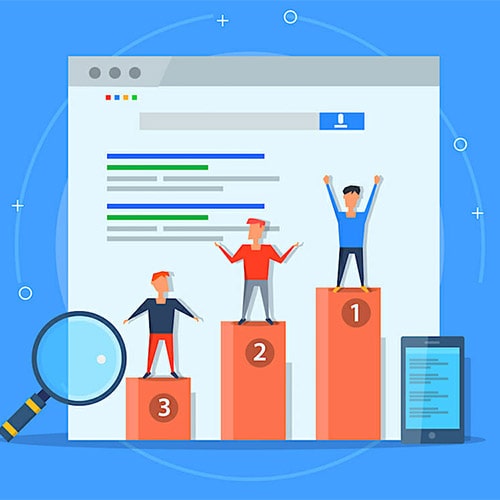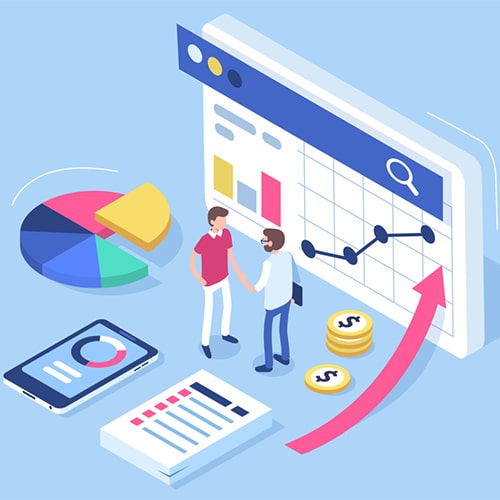Project Material on; The use of ICT in programming library resources, A case study of NOUN Minna study centre
Categories
-
ACCOUNTING PROJECT TOPICS AND MATERIALS47
-
ACCOUNTING EDUCATION PROJECT TOPICS AND MATERIALS6
-
ADULT EDUCATION PROJECT TOPICS AND MATERIALS7
-
ACTUARIAL SCIENCE PROJECT TOPICS AND MATERIALS6
-
AGRICULTURAL EXTENSION PROJECT TOPICS AND MATERIALS49
-
ANATOMY PROJECT TOPICS AND MATERIALS5
-
ARCHITECTURE PROJECT TOPICS AND MATERIALS39
-
AGRICULTURAL SCIENCE PROJECT TOPICS AND MATERIALS48
-
ANIMAL SCIENCE PROJECT TOPICS AND MATERIALS49
-
AFRICAN LANGUAGES PROJECT TOPICS AND MATERIALS7
-
BANKING AND FINANCE PROJECT TOPICS AND MATERIALS49
-
BUSINESS ADMINISTRATION PROJECT TOPICS AND MATERIALS45
-
BUSINESS MANAGEMENT PROJECT TOPICS AND MATERIALS23
-
BUSINESS EDUCATION PROJECT TOPICS AND MATERIALS17
-
BIBLICAL AND THEOLOGY PROJECT TOPICS AND MATERIALS35
-
BIOCHEMISTRY PROJECT TOPICS AND MATERIALS48
-
BIOLOGY PROJECT TOPICS AND MATERIALS59
-
BREWING SCIENCE PROJECT TOPICS AND MATERIALS3
-
BUILDING AND TECHNOLOGY PROJECT TOPICS AND MATERIALS50
-
COMPUTER SCIENCE PROJECT TOPICS AND MATERIALS47
-
CHEMISTRY PROJECT TOPICS AND MATERIALS35
-
COMMERCE PROJECT TOPICS AND MATERIALS25
-
COMPUTER SCIENCE EDUCATION PROJECT TOPICS AND MATERIALS17
-
CURRICULUM STUDIES PROJECT TOPICS AND MATERIALS3
-
CIVIL ENGINEERING PROJECT TOPICS AND MATERIALS49
-
CHEMICAL ENGINEERING PROJECT TOPICS AND MATERIALS50
-
ECONOMICS PROJECT TOPICS AND MATERIALS50
-
EDUCATION PROJECT TOPICS AND MATERIALS49
-
ENGLISH PROJECT TOPICS AND MATERIALS49
-
ELECTRICAL & ELECTRONICS PROJECT TOPICS AND MATERIALS58
-
ENVIRONMENTAL SCIENCE PROJECT TOPICS AND MATERIALS52
-
ESTATE MANAGEMENT PROJECT TOPICS AND MATERIALS52
-
ENTREPRENEURSHIP PROJECT TOPICS AND MATERIALS52
-
FOOD SCIENCE & TECH. PROJECT TOPICS AND MATERIALS52
-
FINE & APPLIED ARTS PROJECT TOPICS AND MATERIALS43
-
FISHERY & AQUACULTURE PROJECT TOPICS AND MATERIALS50
-
FORESTRY & WILDLIFE PROJECT TOPICS AND MATERIALS5
-
GUIDANCE AND COUNSELING PROJECT TOPICS AND MATERIALS50
-
GEOGRAPHY PROJECT TOPICS AND MATERIALS53
-
GEOLOGY PROJECT TOPICS AND MATERIALS43
-
HUMAN RESOURCE MANAGEMENT PROJECT TOPICS AND MATERIALS53
-
HEALTH & SEX EDUCATION PROJECT TOPICS AND MATERIALS24
-
HOME ECONOMICS PROJECT TOPICS AND MATERIALS49
-
HUMAN KINETICS PROJECT TOPICS AND MATERIALS20
-
INFORMATION TECHNOLOGY PROJECT TOPICS AND MATERIALS33
-
INDUSTRIAL CHEMISTRY PROJECT TOPICS AND MATERIALS31
-
INSURANCE PROJECT TOPICS AND MATERIALS50
-
INTERNATIONAL RELATIONS PROJECT TOPICS AND MATERIALS50
-
ISLAMIC & ARABIC STUDIES PROJECT TOPICS AND MATERIALS4
-
LAW PROJECT TOPICS AND MATERIALS51
-
LIBRARY SCIENCE PROJECT TOPICS AND MATERIALS50
-
MARKETING PROJECT TOPICS AND MATERIALS50
-
MASS COMMUNICATION PROJECT TOPICS AND MATERIALS50
-
MATHEMATICS EDUCATION PROJECT TOPICS AND MATERIALS9
-
MICRO BIOLOGY PROJECT TOPICS AND MATERIALS50
-
MARINE AND TRANSPORT PROJECT TOPICS AND MATERIALS7
-
MECHANICAL ENGINEERING PROJECT TOPICS AND MATERIALS48
-
NURSING PROJECT TOPICS AND MATERIALS50
-
OFFICE TECHNOLOGY PROJECT TOPICS AND MATERIALS51
-
PUBLIC ADMINISTRATION PROJECT TOPICS AND MATERIALS49
-
POLITICAL SCIENCE PROJECT TOPICS AND MATERIALS50
-
PSYCHOLOGY PROJECT TOPICS AND MATERIALS49
-
PHILOSOPHY PROJECT TOPICS AND MATERIALS50
-
PHYSICS PROJECT TOPICS AND MATERIALS30
-
PROJECT MANAGEMENT PROJECT TOPICS AND MATERIALS10
-
PHARMACY PROJECT TOPICS AND MATERIALS38
-
PURCHASING & SUPPLY PROJECT TOPICS AND MATERIALS51
-
PRODUCTION & OPERATIONS MGT. PROJECT TOPICS AND MATERIALS23
-
PETROLEUM ENGINEERING PROJECT TOPICS AND MATERIALS72
-
QUANTITY & SURVEYING PROJECT TOPICS AND MATERIALS45
-
RELIGIOUS & CULTURAL STUDIES PROJECT TOPICS AND MATERIALS17
-
SOCIAL STUDIES PROJECT TOPICS AND MATERIALS12
-
SCIENCE LABOURATORY PROJECT TOPICS AND MATERIALS50
-
SOIL SCIENCE PROJECT TOPICS AND MATERIALS11
-
SOCIOLOGY PROJECT TOPICS AND MATERIALS55
-
STATISTICS PROJECT TOPICS AND MATERIALS51
-
THEATRE ARTS PROJECT TOPICS AND MATERIALS14
-
TOURISM & HOSPITALITY PROJECT TOPICS AND MATERIALS34
-
URBAN & REGIONAL PLANING PROJECT TOPICS AND MATERIALS63
-
VOCATIONAL STUDIES PROJECT TOPICS AND MATERIALS43
-
VETERINARY PROJECT TOPICS AND MATERIALS2
-
ZOOLOGY PROJECT TOPICS AND MATERIALS12
-
EDUCATIONAL TECHNOLOGY PROJECT TOPICS AND MATERIALS28
-
APPLIED SCIENCE PROJECT TOPICS AND MATERIALS2
-
CRIMINOLOGY PROJECT TOPICS AND MATERIALS0
-
COMPUTER ENGINEERING PROJECT TOPICS AND MATERIALS0
-
FRENCH PROJECT TOPICS AND MATERIALS0
-
HISTORY PROJECT TOPICS AND MATERIALS0
-
INDUSTRIAL RELATIONS & PERSONNEL MGT PROJECT TOPICS AND MATERIALS39
-
PHYSIOLOGY PROJECT TOPICS AND MATERIALS0
-
MEDICINE PROJECT TOPICS AND MATERIALS0
-
SECRETARIAL STUDIES PROJECT TOPICS AND MATERIALS0
-
PUBLIC HEALTH PROJECT TOPICS AND MATERIALS0
EDUCATIONAL TECHNOLOGY PROJECT TOPICS AND MATERIALS
Project Material on; The use of ICT in programming library resources, A case study of NOUN Minna study centre
Project Material on; The use of ICT in programming library resources, A case study of NOUN Minna study centre
CHAPTER ONE
INTRODUCTION
1.1
INTRODUCTION
Africa
have witness the development of ICTs in various sectors over the last decade
including education. The change from teacher-centred education system to
learner centred education the world over in the past view years contributes to
the use of ICTs in education. Borrowing from the word “Knowledge –Driven world”
as conceived by (Hawkins, 2014; Inwent, 2014), it means that education reform
practices should focus on equal access and quality of education which should highlight
the importance of change in the education sector through use of ICTs and
equipping new generations with enhanced skills to operate in the 21st century.
The use of ICTs in Nigeria and African countries generally is increasing and
dramatically growing. However, while there is a great deal of knowledge about
how ICTs are being used in developed countries, there is not much information
on how ICTs are being introduced into schools in developing countries
(Beukes-Amiss and Chiware, 2006). Looking at the developing countries according
to these authors, there is generally limited access time per month using ICTs
by both the teachers and students, and even less time spent with reliable
Internet access. It should be noted that availability of ICTs vis-à-vis access
in term of ratio of teachers and students differs significantly. Despite this,
the new and emerging technologies challenges the traditional process of
teaching and learning, and the way education is managed.
While
information communication technology is an important area of study in its own
right, it is having a major impact across all curriculum areas. Easy worldwide
communication provides instant access to vast array of data, challenging assimilation
and assessment skills Fowowe, (2016). Rapid communication plus increased access
to ICTs in the home, at work, and in educational establishment, could mean that
learning becomes a truly lifelong activity- an activity in which the pace of
technological change forces constant evaluation of teaching process itself.
Formerly, the term IT was used to mean ICT, the term which was synonymous with
computer but as the passage of time, it covered other equipment created to
enhance acquisition, storage and dissemination of information materials. Most
of these equipments were initially confine to the vicinity of offices.
Libraries in the course of time embraced the use of these equipments to carry
out their day-to-day activities as usage was adapted to carry out some routine
activities. It functions does not end there. The current issue is the use of
ICTs in the classroom by the teachers. This includes specifically the use of
computers, Internet, telephone, digital camera, data projector, etc. As the
world continues to revolve around technology, teachers need to continue
incorporating these new technologies into their teaching. Meanwhile, it is
observed that some studies have been conducted on uses of ICTs by teachers
particularly on the issue of their professional development. Most of these
studies were carried out in developed countries where the use of ICTs has come
of age, and where there are resources and material to maintain them. However,
the use of ICTs by teachers in Nigeria is just beginning to gain popularity and
researches in the area have just started emerging.
Emphatically,
the use of ICTs by teachers to teach the students is highly advantageous. This
is because its enable them to demonstrate understanding of the opportunities
and implications of the uses for learning and teaching in the curriculum
context; plan, implement, and manage learning and teaching in open and flexible
learning environment UNESCO, (2004). In the light of these therefore, more
research is needed to showcase further development of ICTs use by secondary
school teachers in Nigeria.
Information
Communication Technology refers to any electronic means of capturing,
processing, storing, and dissemination of Information. It is a combination of
Information Technology (IT) and Communication Technology (CT). Hamza (2017)
refered to Information Technology (IT) as the packaging and processing of
Information, while Communication Technology (CT) involves the interaction,
exchange, and linkage of Information and data base between users through
networking. Hamza (2006) also defined ICT as the integration between computer
and all sorts of electronic communication devices in order to enhance quicker
access and dissemination of information.
Advances
in Information and Communication technologies have brought about exciting
opportunities for fundamental changes in education. Creating a vivid, playful,
interactive learning environment with the support of multimedia presentations
helps to provide an easy platform of learning that can support knowledge
dissemination engagement or cognitive control. Suwaid (2013) asserted that
children who learn informally through the use of technology devices seem to be
high achievers at school as they give more meaning to such items they come in
contact with, they develop more interest to complex toys and other machines
with key pads and buttons. Modern Information and Communication Technology is
very important in teaching and learning. For example the use of computers,
television, radio, internet etc brings about easy access to information, making
learning more flexible and interesting. The impact of Information and
Communication Technology has been felt in the home, in the school, in the area
of training, defence and security, finance and commerce, in the manufacturing
industries, and in the offices etc.
1.2
BACKGROUND
OF THE STUDY
The
Nigerian National policy on Information Technology define Information
Technology to include any equipment or interconnected system or subsystem of
equipment, that is used in the automatic acquisition, storage, manipulation,
management, movement control, display, switching, interchange, transmission or
reception of data or information.Information and communication technologies
(ICT) are electronic technologies used for information storage and retrieval.
Development is partly determined by the ability to establish a synergistic
interaction between technological innovation and human values. The rapid rate
at which ICTs have evolved since the mid 20th century, with its convergence and
pervasiveness giveit a strong role in development and globalization Nwagwu, (2016).
ICTs have a significant impact on all areas of human activity Brakel and
Chisenga, (2013.
The
field of education has been affected by ICTs, which have undoubtedly affected
teaching, learning, and research Yusuf, (2015). A great deal of research has
proven its benefit to the quality of education Al-Ansari, (2016). ICTs have the
potential to accelerate, enrich, and deepen skills, to motivateand engage
students, to help relate school experience to work practices, create economic
viability fortomorrow's workers, as well as strengthening teaching and helping
schools change Davis and Tearle, (2019); Lemke and Coughlin, 2018; cited by
Yusuf, (2015).
Students
who use ICT gain deeper understanding of complex topics and concepts and are
more likely to recall information and use it to solve problems outside the
classroom, Apple Computer, (2012). Students have reported that they benefit
more when they are left to interact with computers. ICT has a well organized
layout, the instructions were clear, and that the theme was fun or motivating Kay,
(2017). ICT that utilize a visual dimension, including digital video,
photography or video conferencing are found to be engaging for students Condie&
Munro, (2017). They provide a stimulus for collaborative working and discussion
amongst fellow students and teachers that enable the students to take control
of their own learning process. These technologies appear to be especially
effective when used with groups of students with special or additional needs.
In addition, through ICT, students extend and deepen their knowledge,
investigation, and interest when access to information is available on multiple
levels (CEO Forum on Education and Technology, (2011).
Adeogun
(2013) emphasized that ICT have broken the barriers of time, distance and
location which use to impede the growth of formal education. Information and
Communication Technologies have also had profound impact on the tasks and
skills of teachers in both the pattern and quality of lecture delivery (Mogbo,
2002). Rapid development of ICT has led to many changes in the responsibilities
of the academics in tertiary institutions. The traditional methods of carrying
out academic work are fast becoming inappropriate. Ehikhamenor (2002) stated
that ICT are changing the ways in which academics seek information, communicate
with each other, conduct research and distribute research results. All these
point to the fact that Information and Communication Technologies are very
important for effective teaching, learning, and research activities in an
academic environment.
Concurrently, nations of the world have the obligation of giving
her citizens basic education. Basic education is essential for an individual to
be able to access and apply information. The Economic Commission for Africa
(ECA) has indicated that the ability to access and use information is no longer
a luxury, but a necessity for development. Unfortunately, many developing
countries in Africa, especially Nigeria are still low in the integration,
application and use of ICT in their educational curriculum (Esther &
Michael, 2011). The National policy on education on
secondary education also recognizes the prominent role of Information and
Communication Technology (ICT) in knowledge advancement and therefore noted
that Government shall provide necessary infrastructure and training for the
integration of ICT in the school system.In relation to this, the first mission
statement of the national policy for Information and Communication Technology
is to use ICT for education. It further has integration of ICT into the
mainstream of education and training as one of the general objectives. This
will undoubtedly be an innovation in the Nigerian educational system; Nigeria’s
ICT policy’s vision statement is to make Nigeria an ICT capable country in
Africa and a key player in the information society by the year 2020, using it
as the engine for sustainable development and global competitiveness.
In
her education, Nigeria presently runs the 9-3-4 educational system which is
broadly divided to three segments of basic education, senior secondary and
higher education. Here, the primary and the junior part of secondary education
is a compulsion one for all children as embedded in the universal basic
education policy which is a derivative of the global Education for All (EFA).
In line with the global trend on information technology application in
education, the government of Nigeria has integrated its educational use in the
general objectives of the national policy on information technology. The
sixteenth objective as stated in the policy is ‘to integrate IT into the
mainstream of education and training’. This also explains why the National
policy on Education (2004) specifically stated on secondary education that
‘government shall provide necessary infrastructure and training for the
integration of ICT in the school system in recognition of the role of ICT in
advancing knowledge and skill in the modern world. This indicates that the
Nigerian society also recognizes the importance of IT in its secondary
education.
The
national educational goals which are derived from the country’s philosophy and
goals include, “the acquisition of appropriate skills and the development of
mental, physical and social abilities and competencies as equipment for the individual
to live in and contribute to the development of the society” (Federal Republic
of Nigeria (FRN), 2004:8). In order to realize fully the potentials of the
contributions of education to the achievement of the national educational
goals, emphasis is placed on the broad goals of secondary education which aim
at preparing individuals for “useful living within the society and for higher
education” (FRN, 2014:18). More specifically, in the junior secondary school,
the curriculum provides for the academic, sciences and pre-vocational subjects.
The focus of the secondary education at the junior level targets the
realization of the following goals, “to offer diversified curriculum to cater
for the differences in talents, opportunities and future roles; to provide
trained manpower in the applied sciences, technology and commerce at
sub-professional grades, and to provide technical knowledge and vocational
skills necessary for agricultural, industrial, commercial and economic
development” (FRN, 2014:17-19). These goal statements had guided the efforts
toward the developing of new curricula for the junior secondary education in
basic science which encompass, “physics, chemistry, biology” (FRN, 2004:20).
Basic
science, formerly known as Integrated Science, is the first form of science a
child comes across at the secondary school level; hence basic science prepares
students at the Junior Secondary School level for the study of core science
subjects (physics, chemistry, biology) at the Senior Secondary School level Olarewaju,
(2014). This implies that for a student to be able to study single science
subjects at the Senior Secondary School level successfully, such student had to
be well grounded in basic science at the Junior Secondary School level. In view
of this, basic science is given great emphasis in the Junior Secondary School
curriculum. The principal reasons why Nigerian Government started Basic Science
teaching in Nigerian secondary schools are as follow:
·
To provide students at the Junior
Secondary School level a sound basis for continuing science education either in
single science subjects or further integrated science;
·
To enhance the scientific literacy of
the citizenry;
·
To allow students to understand their
environment in its totality rather than in fragments;
·
To allow the students to have general
view of the world of science;
·
The processes of science serve as
unifying factor for the various science subjects. It is necessary for the
learner to know these processes through integrated approach of learning science
Federal Ministry of Education, (2011).
Despite government’s efforts to encourage
integration of information and communication technology (ICT) for science
teaching and learning among Nigerian students right from the Junior Secondary
School level, the performance of students in core science subjects and science
oriented courses at the Senior Secondary School level and tertiary institutions
level respectively, is not encouraging (Oludipe, 2010).Higher
education institutions, especially those in the West, have adopted ICT as a
means to impart upon students, the knowledge and skills demanded by 21st
century educational advancement (UNESCO, (2002a) in Nwachuku, (2009)).
According to UNESCO (2002b) in Nwachuku (2009), ICT now permeates the education
environment and underpins the very success of 21st century education. ICT also
adds value to the processes of learning and to the organization and management
of learning institutions. Also, Technologies are a driving force behind much of
the development and innovation in both developed and developing countries. As
such, all countries must seek to benefit from technological developments. To be
able to do so, professionals have to be educated with sound ICT integration,
independent of specific computer platforms or software environments, to meet
the required competencies of the ever-changing global environment.
This
is evidence by a survey conducted by education.au (2008a, 2008b) which found
out that secondary school teachers rated infrastructure, bandwidth, equipment
reliability and access, alongside limited access to computers or internet
connection as barriers to ICT integration. Secondary school teachers indicated
infrastructure, bandwidth, equipment reliability and access as well as blocking
or filtering of internet content as their most common barriers. However,
perhaps the greatest barrier for most teachers in adopting ICT for their
classroom teaching was their lack of understanding of the new technology.
Equally, Teacher familiarity and professional development with ICT has been
found to be low (Freebody, Reimann& Tiu, 2018).Hence this research study
examines ICT integration in the teaching of Basic Science in Junior Secondary
Schools in AMAC secondary schools, Abuja.
1.3 STATEMENT OF THE PROBLEM
The
trend in all the great nations of the world, like United States, Britain,
Germany and Japan is the integration of information and communication
technology (ICTs) and electronic resources in all facet of life. Hence,
research attention is been geared towards integration of Information and
Communication Technology (ICT) and electronic resources. Efforts made so far by
the government towards ICT integration in Nigeria include the launching of the
National Telecommunication Policy in September 2000, development of a comprehensive
science and technology policy in 2001, the development and launching of the
National IT policy in 2001, the establishment of the National Information
Technology Development Agency (NITDA) in 2001, and the launching of the Nigeria
satellite systems programme by the National Space Research and Development
Agency (NASRDA) in 2001. Other efforts made are: the granting of license to
mobile telephone network operators beginning with MTN in 2001, development of a
ministerial initiative on e-education for the Nigerian education system by the
Federal Ministry of Education in 2004, formulation and presentation of IT bill
to the national assembly in 2006, and the organisation of computer training for
teachers across the country by Educational Trust Fund (ETF) in 2006.Despite these efforts, Information and Communication
Technologies (ICTs) integration is still marked with apathy on the part of
science teachers and students, possibly due to lack of basic ICT skills and
electronic resources for effective academic activities in schools. This study
therefore examines ICT integration in the teaching of basic Science in Junior
Secondary Schools in AMAC secondary schools, Abuja.
1.4 OBJECTIVES OF THE STUDY
The purpose of this study was to
determine:
i. The
extent of students perception of ICT integration in the learning of Basic
science in AMAC secondary schools, Abuja
.
ii. The
extent of teachers perception of ICT integration in the teaching of basic
science in AMAC secondary schools, Abuja.
iii. The
extent of Information and Communication
Technologies (ICTs) integration in
the teaching of Basic Science in junior Secondary Schools
in AMAC secondary schools, Abuja
1.5 RESEARCH QUESTIONS
- The
significant use of information technology toward student’s perception of
ICT integration in the learning of basic science?
- What is the
extent of teacher’s perception of ICT integration in the teaching of basic
science?
- Has information technology help in the teaching
of Basic Science in AMAC secondary schools, Abuja?
1.6 STATEMENT OF HYPOTHESIS
Hypothesis One:
Ho:
The use of ICT is not effective on teaching and learning of Basic Technology in
AMAC secondary schools, Abuja.
Hi:
ICT use is effective on teaching and learning of Basic Technology in AMAC
secondary schools, Abuja.
Hypothesis Two:
Ho: There’s
no significance improvement amongs student on the perception of ICT integration
in the learning of Basic science.
Hii: There’s
a significance improvement amongs student on the perception of ICT integration
in the learning of Basic science.
Hypothesis Three:
HO: There's
no significant need of Information and Communication Technologies (ICTs)
integration in the teaching of Basic Science in junior Secondary Schools, Abuja.
Hiii: There's
significant need of Information and Communication Technologies (ICTs)
integration in the teaching of Basic Science in junior Secondary Schools,
Abuja.
1.7 SIGNIFICANCE OF THE STUDY
The
significance of the study is centered on the students, teachers, educational
planner, administrators, government and the general public. There are a lot of benefits to derive on the
effective use of ICT in teaching and learning of Basic Technology. This study
is very important in various ways. It is expected to identify the perception of
students’ and teachers’ Information and Communication Technology (ICT) integration
for academic activities. The results of this study are expected to unfold the
problem which the students face on the use of ICT and electronic resources and
how the problem affects their overall performance in school, especially in
basic science. Knowledge of Information and Communication Technology
(ICT)integration and electronic resources will help the Government, school
Administrators, Parents and Science Teachers to start working together towards
alleviating some of the problem face by the students in integrating information
and communication technology (ICT) for better educational outcome.
This
study will also benefit administrators and educators in pursuing knowledge that
will assist in determining the important variables as well as recognizing
access to ICT infrastructure and resources in successful academic performance.
The
study will also help to reduce increased dropout rate in the country
(especially for students) that lack ICT skills thus increasing literacy rate as
well as level of ICT integration among students and teacher. Finally, the study
will also be beneficial to students as it will enlighten them on the need to
take their educational life more seriously especially with the integration of
ICT, so as to contribute to the development of science and technology in the
country (Nigeria).
1.8 SCOPE AND LIMITATIONS
The study will cover only five
junior secondary Schools in Abuja. The schools in Abuja will be stratified into
public and private schools. Stratified random sampling technique will be used
in selecting thirty junior secondary students and ten teachers from schools
selected for the study. In all, a total sample of twenty (20) junior secondary
school students and teachers will be the sample for the study.
This study will also determine both
students and teachers perceptions toward ICT integration for academic
activities such as preparing for Exams, preparing for class test, preparing for
term paper assignment, preparing for seminars/ workshops and preparing for
group discussion in which the following ICT skills possessed by the students
and teachers were used for; setting up the computer and its peripheral devices,
loading various software’s, utilizing a printer, using a scanner, using various
operating system tools, choosing computer software suitable for students with
special needs, troubleshooting simple computer malfunctions, using a digital
camera, formatting disk, using the internet, Using E-mail.
1.9 JUSTIFICATION OF STUDY
The
findings of the study will encourage teachers and students to develop skills
and competencies in ICT technologies for teaching and learning in schools.
Curriculum planners will be made to design curriculum that will implement
effective approaches to ICT technology driven education at the 21st century in
schools syllabus contents which will improve students’ skills and competencies
for employability and self sustainability. The study will provide improved
performance in terms of teaching and learning abilities of teachers and. It
will also promote conveniences and flexibility of students through self paced
and time, as well as increased access to best quality instructors through
sharing of knowledge across borders, via online internet connectivity.
1.10 DEFINITION OF TERMS
Information:
This can be refers to as process data
Communication: This
is the act of passing information.
Information and Communication
Technology: This refers to a set of combined
technologies that will facilitate not only information processing but also its
transmission for purpose of teaching and learning.
Computer: This
is an electronic device that accepts data in coded form and processes them to
give meaningful information.
Basic Science: this
is an integrated science course is a subject that deals with
the study of living things and non-living things. It also combines all other
science subjects such as physics, biology, health science, agricultural
science, geography, etc.
Integration: This
is a combination of parts or object that works together well. It is the process
of coordinating separate personality elements into a balanced whole or
producing behavior compatible with somebody’s environment Encarta (2019).
Junior
Secondary School: This is a school which children attend
between primary school and secondary school in places which use three or four
levels of schooling, typically between the ages of about 10–14 although this
varies. More commonly, two levels of schooling are used, with children moving
directly from primary to secondary school at about 11 years old.





